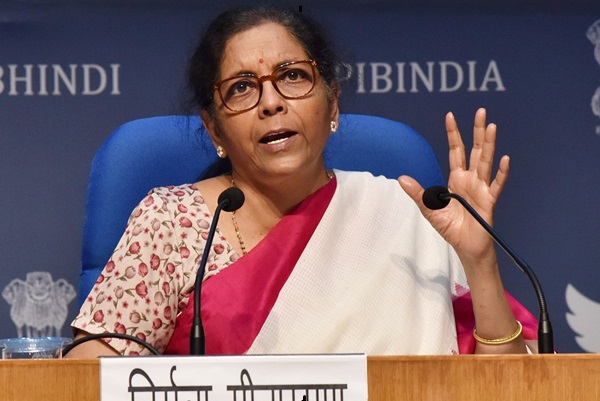.png)

Alok Kumar Mishra is a professor at the University of Hyderabad, researching financial economics and public policy.
March 11, 2025 at 6:13 AM IST
At a pivotal moment for the Indian economy, Finance Minister Nirmala Sitharaman has signalled a potential reduction in Goods and Services Tax rates. This move is likely driven by a confluence of factors—dwindling domestic demand, export challenges, inflationary concerns, and geopolitical uncertainties.
The GST regime, designed to streamline compliance and unify indirect taxation, was a transformational reform. However, its effectiveness is now under scrutiny. Recent data reveal a concerning trend: net GST receipts grew by only 3.3% in December 2024, despite a 7.3% increase in gross GST collections. This stagnation has reignited discussions on rate adjustments to reinvigorate economic momentum.
Private consumption, a critical driver of growth, has shown signs of strain, particularly in discretionary spending and essential sectors like textiles and education. Lowering GST rates could enhance affordability, stimulate demand, and provide a much-needed economic impetus. A GST reduction is often viewed as a tool to boost economic activity by lowering business costs and encouraging consumer spending. However, its efficacy in the current context will depend on broader global factors, including recent US tariff measures, disruptions in Red Sea trade routes, and regional security concerns.
President Donald Trump's "reciprocal tariffs," announced in early 2025, aim to align US import duties with those of its trading partners. Economists estimate these measures could shave 5 to 10 basis points off India's projected GDPgrowth of 6.6%. India’s export sectors—textiles, pharmaceuticals, and auto components—face mounting pressure due to tariff hikes. The resulting slowdown, coupled with currency depreciation and job losses, raises a critical question: can GST reductions offset these adverse effects?
Domestic resilience
Reducing GST could help stimulate domestic demand by making goods more affordable, particularly in high-demand sectors such as textiles, electronics, and MSME products. It would also enhance India’s global competitiveness by lowering manufacturing input costs, giving businesses more room to absorb price shocks. For small and medium enterprises, which form the backbone of India’s export economy, a tax reduction could provide crucial relief, helping them withstand external tariff pressures.
Yet, the impact of GST cuts as an economic shield is inherently limited. As a domestic tax, it does not directly counteract the tariffs imposed by the US on Indian exports. Furthermore, a reduction in GST could strain government revenues, potentially limiting public investment in infrastructure, social welfare, and fiscal sustainability. While a tax cut might lower consumer prices in the short term, prolonged revenue shortfalls could lead to inflationary pressures if the government resorts to borrowing to fill fiscal gaps.
A singular focus on GST reductions is inadequate. A broader strategy is essential to safeguard India's economic resilience. Expanding trade partnerships with the EU, ASEAN, and Africa would help reduce reliance on the US market. Providing direct incentives and financial aid to industries most affected by U.S. tariffs could offer immediate relief. Regulatory reforms to ease business operations and attract domestic and foreign investment would strengthen the manufacturing sector. Strategic trade agreements must also be pursued to mitigate tariff disruptions and enhance India’s global trade footprint.
A well-calibrated GST cut, if targeted effectively, could cushion the economy by bolstering domestic demand and reducing manufacturing costs. However, it cannot fully compensate for the loss of export earnings. India must adopt a multifaceted approach, blending fiscal, trade, and industrial policies to navigate global headwinds and sustain long-term growth.




